No matter what you’re selling or aiming for, there’s an ideal sales channel out there for you. Below, you’ll find our list of the best online selling sites for global merchants. Plus, as an extra tip, we’ll share the perks of having your own store. Without further ado, let’s get to it.



Create your own online store
There’s no better way to sell online than through your own store. Platforms like Shopify make it easy to build one from scratch. You control your pricing, keep all the profits, and don’t have to worry about commissions.
Shopify is especially user-friendly for beginners and offers excellent customer service. Plus, it supports integration with popular sites like Amazon, eBay, and Facebook. This means you can get more eyes on your products and potentially more sales.
→ Click Here to Launch Your Online Business with Shopify
What’s more, Shopify’s payment processing fees are quite competitive. While most processors charge a flat 2.9% + 30¢ for online payments, Shopify charges a range depending on your plan: from 2.9% + 30¢ to as low as 2.4% + 30¢ per transaction.
Helpful resources:
- How to Use Shopify: A Quick and Easy Shopify Tutorial
- 7 Best Free Shopify Themes For Your Online Store
- 9 Shopify Tips New Store Owners Need to Know
- 17 Free Shopify Apps You Need to Install
- The Ultimate Shopify Dropshipping Guide
Top 20 websites for selling stuff online
The following are some of the most well-known online selling sites and can accommodate just about any item you might have.
Best websites to sell products online
- Amazon
- Bonanza
- eBay
- Etsy
- Ruby Lane
- Poshmark
- Chairish
- Decluttr
- Swappa
1. Amazon

Amazon is a trusted go-to website that sells more than 400 products per minute. How is it able to sell that much so quickly? By making sure people feel a sense of comfort and trust when buying from the site.
Amazon is known to verify sellers and keep counterfeit products out of its marketplace. And it’s earned people’s trust by delivering the items they want, on time. That’s why so many customers consider it their go-to marketplace for online shopping. Such a large number of perks means your products are more likely to be sold, but it also means the site comes with more fees.
A professional selling account on Amazon requires an application process as well as a $39.99 monthly fee. There are also fees for each item sold. If you don’t plan on selling more than 40 items a month, you can get an individual seller account that requires no monthly fee. The individual seller account charges a 99¢ per item fee, plus percentage fees on top of that, depending on the category in which your item is selling.
Amazon is great for those looking to move large quantities of products or need exposure to a larger audience.
2. Bonanza
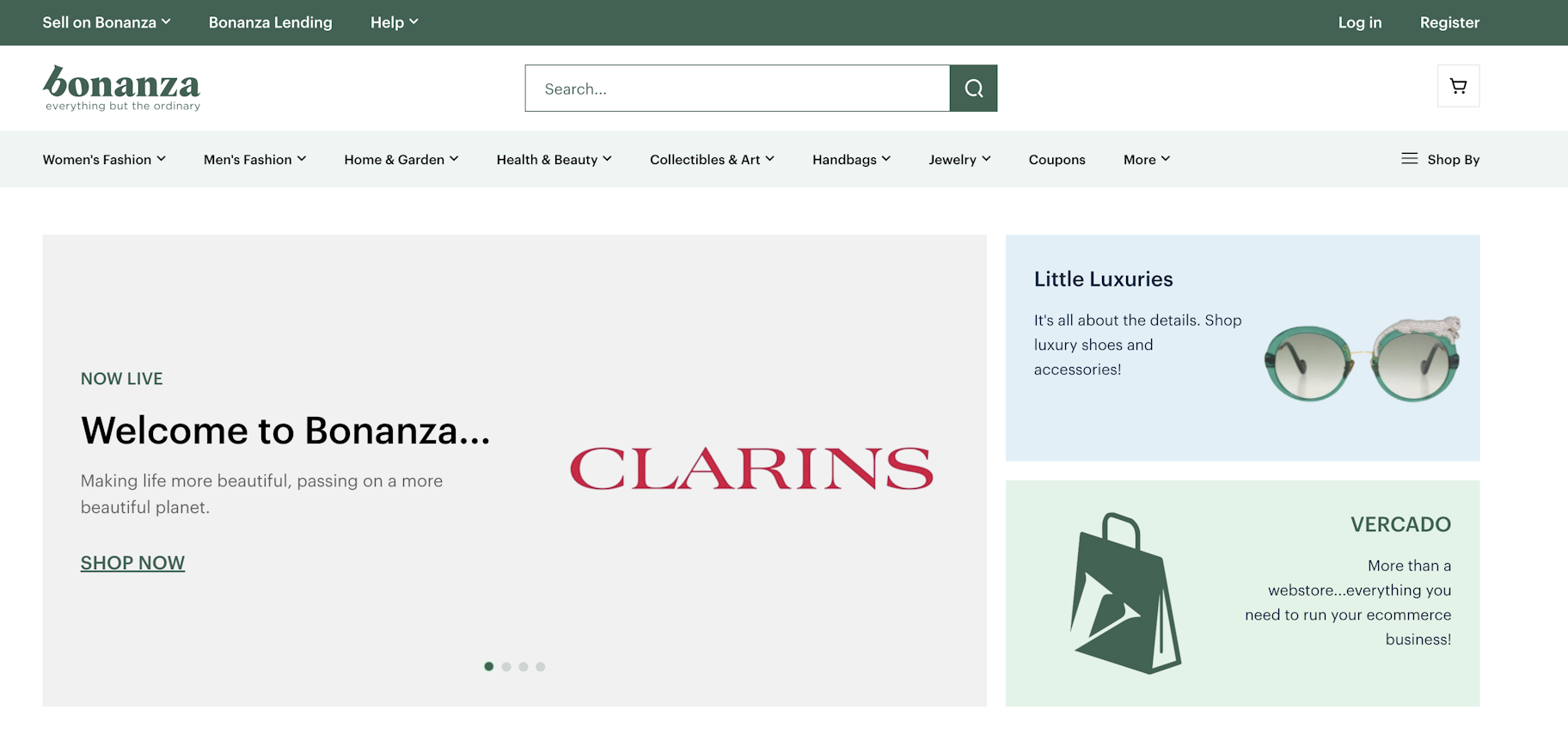
This Seattle-based company is relatively new to the online marketplace scene, yet is doing remarkably well. With more than 50,000 sellers and 35 million different items, Bonanza is a large and growing community of online shops.
The fees for selling on Bonanza are relatively minimal and are based on what it calls the “final offer value.” The final offer value is the combined dollar value of what the buyer paid, plus the portion of the shipping fee that exceeds $10.
So, if you sell an item for $20 then charge $12 for shipping, the final offer value is $22. The selling fee is 2.5% of the final offer value, so, in this example, your fee would be only 77¢. If you sell items for more than $500, the same rules apply, but there is an additional 1.5% flat fee on any dollar amount over $500.
This online selling site works well for those who are not able to pay listing fees. Setting up a shop is easy, and you only pay fees if you make a sale.
3. eBay
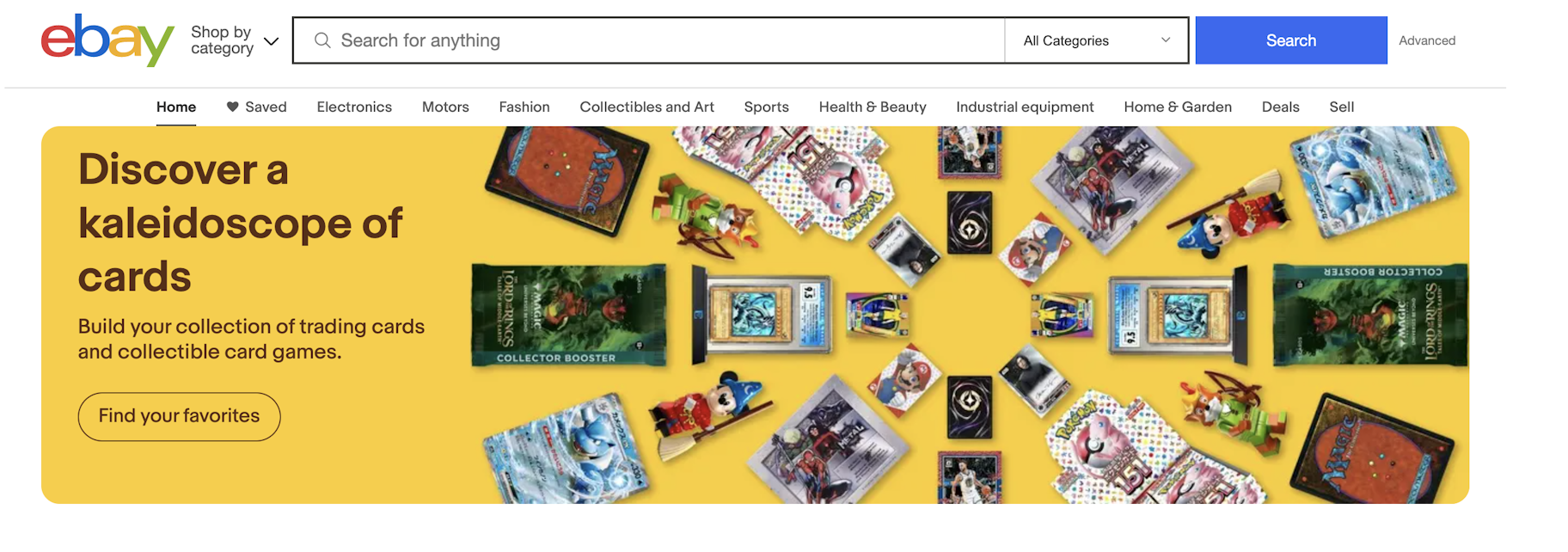
The original online selling platform, eBay was founded in 1995. There is almost nothing you can’t sell on this website. So if you’re looking to sell something antique, crafty, or a little weird, this might be the online selling site for you.
Be aware of the selling fees when selling on eBay. It charges a non-refundable fee to list an item and another “insertion” fee if you decide to list the same item in another category.
There’s also a “final value fee,” which is a certain percentage (eBay says it’s 10% to 12% for most categories) of the price that your item sells for, plus a percentage of the shipping costs. These fees vary and are calculated based on what your product is, how many, and what types of categories it is listed in, as well as shipping.
4. Etsy
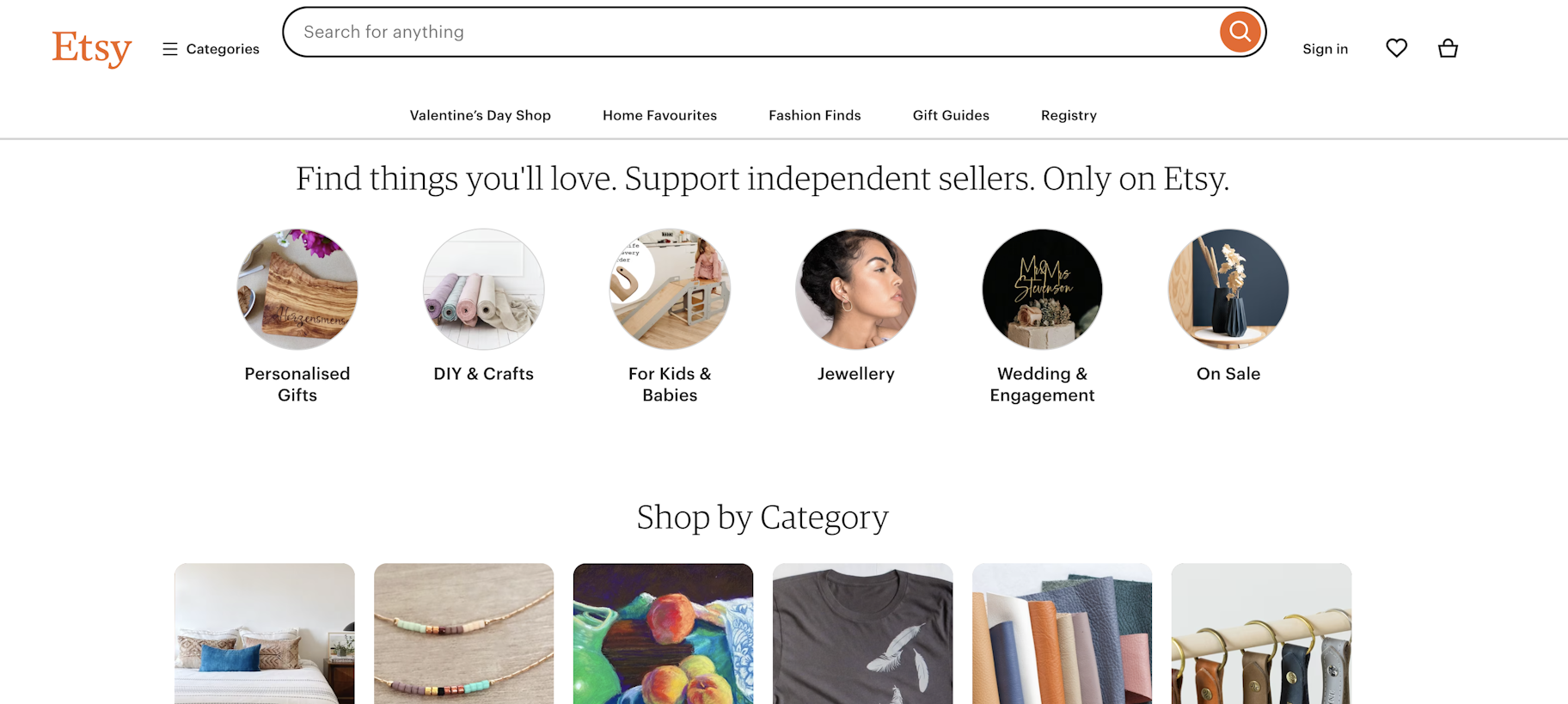
Etsy caters to more of a niche market than that of eBay or Amazon. Here, you can sell your handmade goods, art, collectibles, and antiques. With annual sales in the billions, Etsy is considered to be a lucrative platform for online selling.
Etsy charges a 20¢ listing fee for each item. The item stays in your shop for four months or until it sells, whichever comes first. When you sell an item, there is a 5% transaction fee and a 3% plus 25¢ processing fee (this varies based on the location of the seller’s bank).
The transaction fees apply to just the listed price (not to sales tax) if you’re selling from Canada or the US. However, the platform will take 5% of the overall shipping costs should you decide to charge customers a separate shipping fee.
Etsy is well known and respected. Its ease of use and overall good standing in the online selling world make this site one of the best places to sell your stuff online.
5. Ruby Lane

Probably the best online selling site and shopping forum for vintage and antiques, Ruby Lane was voted the number one recommended selling venue a few years back.
There’s no fee to set up a shop with Ruby Lane, and the platform doesn’t charge you for listings. However, you need to pay a $54 monthly maintenance fee for shops with 50 items or more. Additionally, Ruby Lane charges a 6.7% service fee on total purchase order (excluding sales tax).
This online selling site is designed to bring collecting enthusiasts together. If you’re looking for a niche selling website for your antiques and collectibles, this is likely the site for you. Be mindful of the fees, though.
6. Poshmark
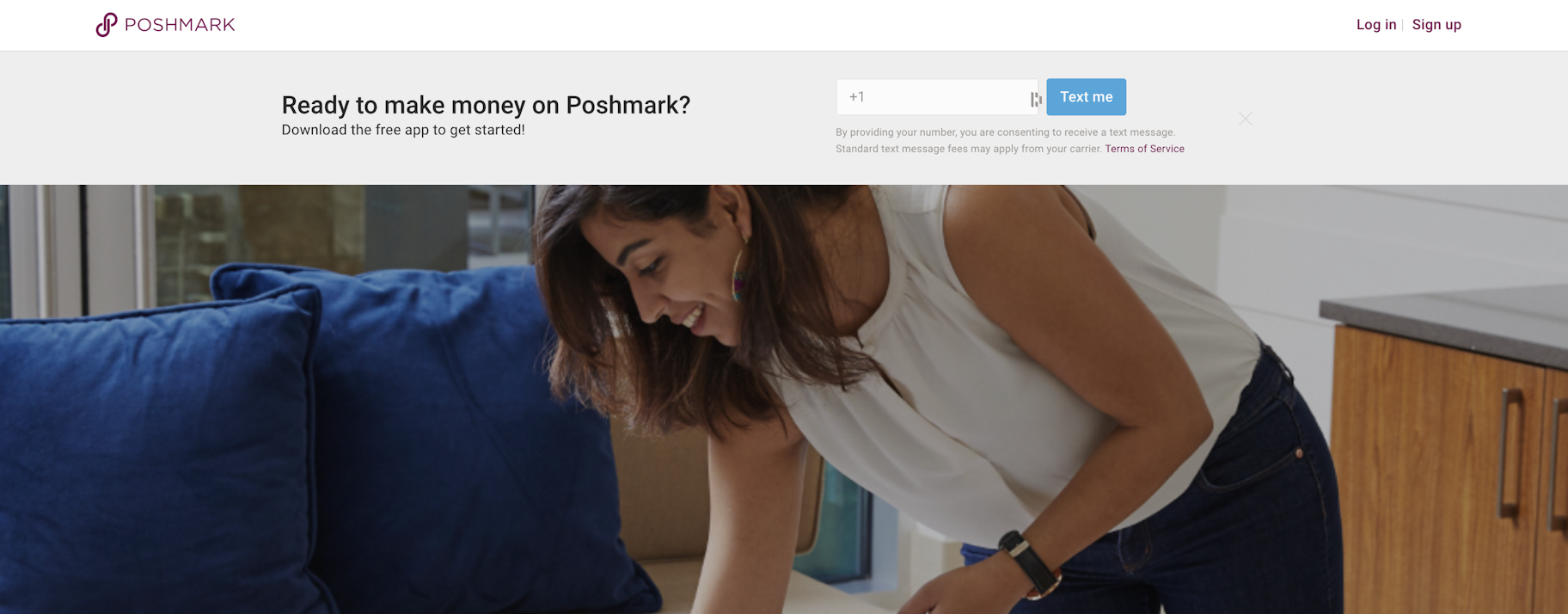
Poshmark is a popular social commerce marketplace for selling clothing and lifestyle accessories. With its community of more than 80 million users, sellers get access to a large audience of eager buyers.
Poshmark’s pricing is simple: a flat fee of $2.95 for sales under $15 and a 20% commission for higher sales. This makes it a cost-effective option compared to other online marketplaces.
Plus, Poshmark has a supportive community and user-friendly tools that help you manage your listings and sales efficiently.
7. Chairish
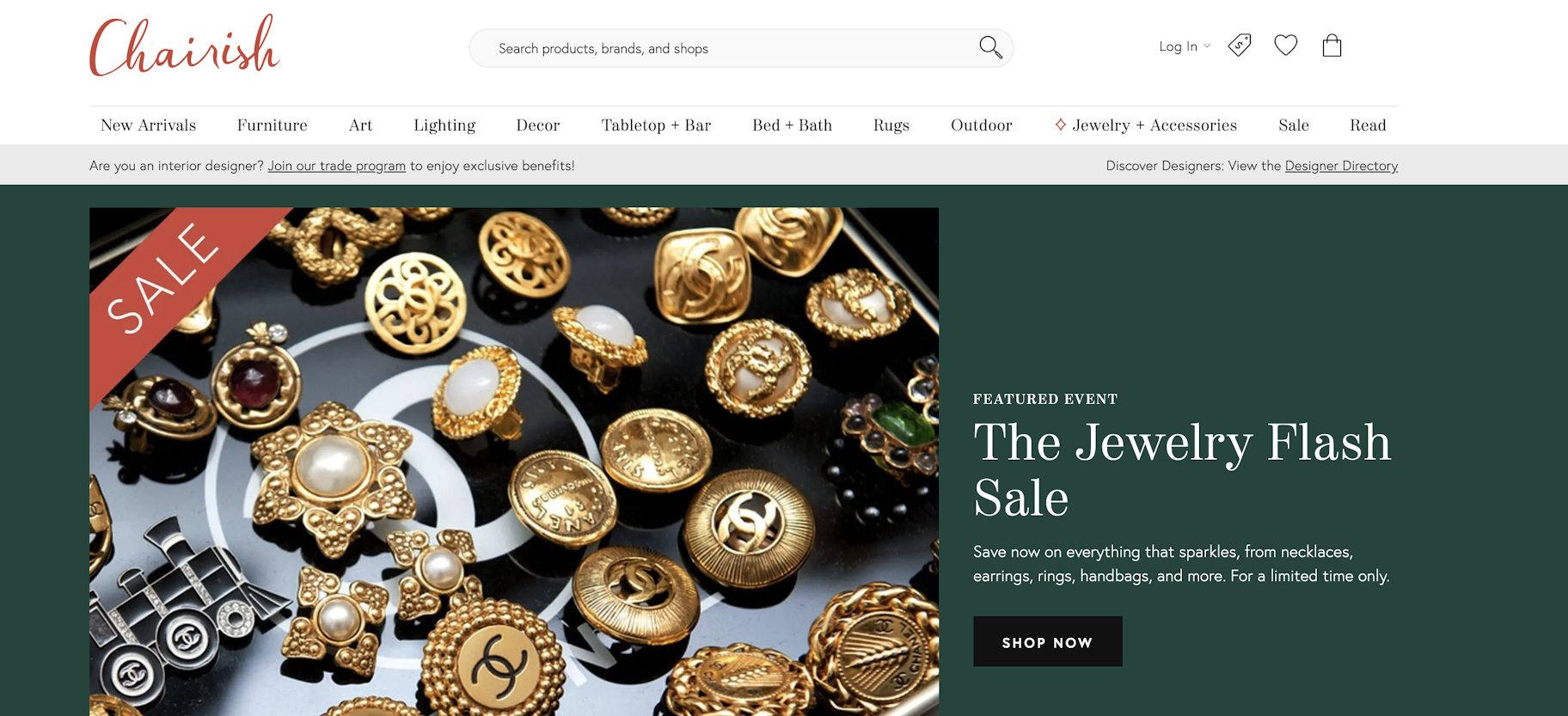
This growing online consignment store is geared specifically for high-quality furniture and home décor. Listing items is easy on Chairish and, like any consignment store, it takes a percentage of the selling price.
The percentage that Chairish keeps depends on how much your item sells for: 20% of the first $2,500, 12% of the next $22,500, and 3% of the next $15,000. In the example on its website, if you sell an item for $40,000, you get to keep $35,350.
The best part is that listing your items is completely free. You list your items and the curators at Chairish review them to make sure they meet their standards. Then they touch up your provided photos and make the item available for purchase.
Chairish also takes care of the shipping logistics, so you don’t have to worry about shipping large pieces of furniture (just as you don’t when you engage in dropshipping). You can also arrange your own shipping if that suits you.
Chairish is a great online selling site for those that want to sell furniture and other home décor. It upholds high standards, which is ideal for buyers and collectors.
8. Decluttr
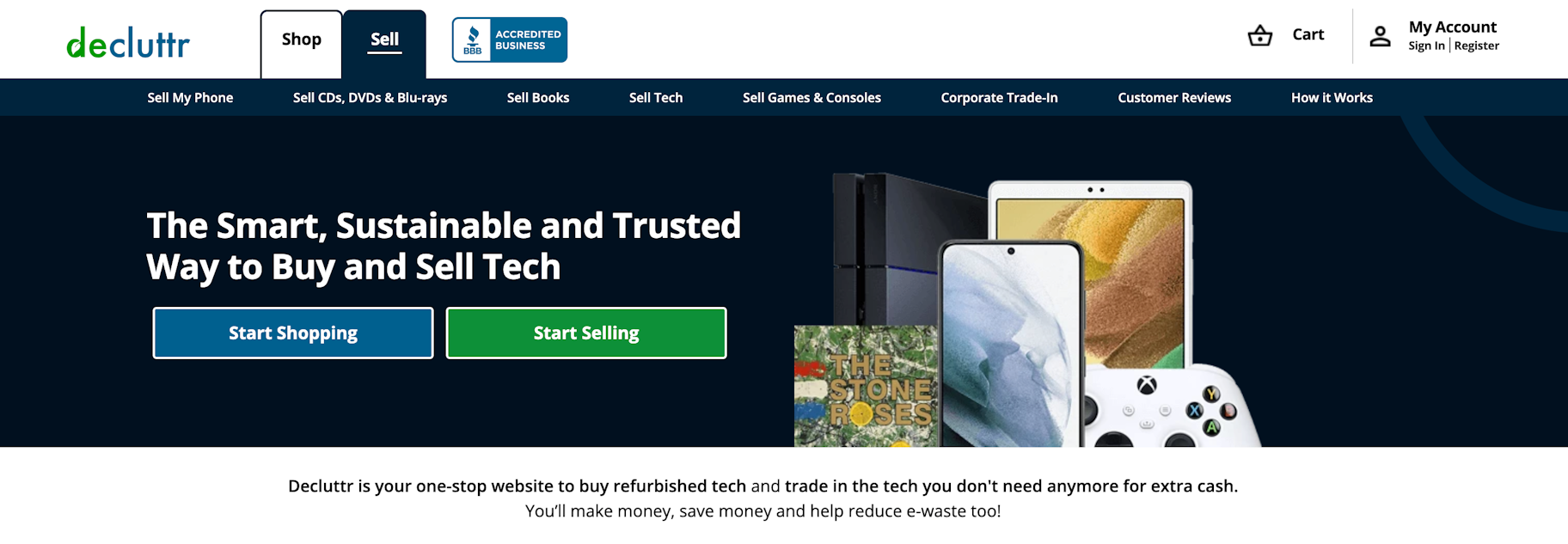
Decluttr is a marketplace with a focus on tech. It’s the go-to place for selling electronics, books, game consoles, and other home entertainment items.
What sets Decluttr apart is its direct purchase approach. Instead of listing your items for others to buy, Decluttr buys them from you. You just need to scan the bar code of your item using Decluttr’s app to get a quote.
The selling process on Decluttr is streamlined for ease. It takes care of all the shipping costs. Once it receives your items, it pays you promptly. This method removes the hassle of waiting for a buyer.
9. Swappa
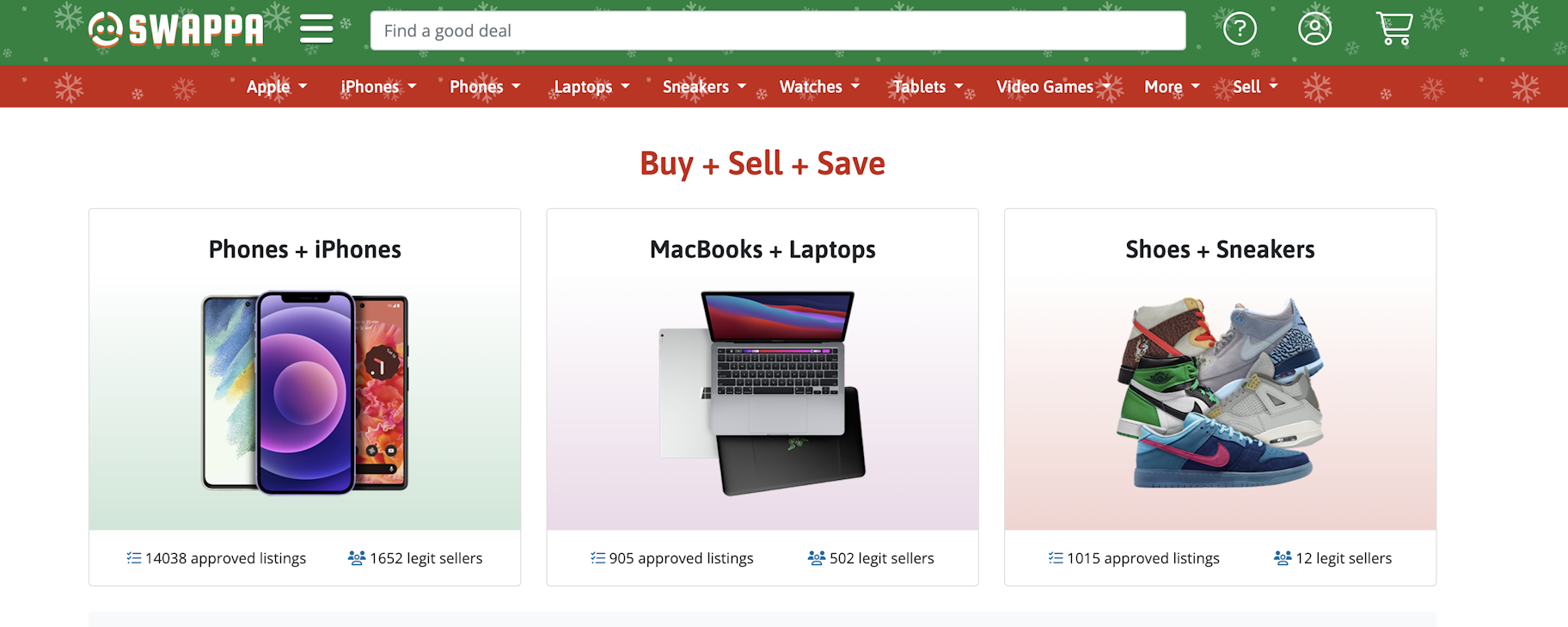
Do you have a smartphone that you no longer use? A camera lying around gathering dust in your drawer? Maybe you can consider turning them into cash.
Swappa is a marketplace to buy and sell tech gadgets. The team behind the platform has done a great job of weeding out the trolls and fraudsters, which helped it gain an excellent reputation. Of course, this means it will thoroughly scrutinize your item, which won’t be a problem if you’re selling products in good working condition.
Swappa doesn’t charge seller fees to create listings. However, you can choose to get a listing featured for a $5 fee. Also, transactions on Swappa typically happen via PayPal, which charges a fee from sellers when buyers make a payment. Still, Swappa has one of the lowest fees amongst all the marketplaces on our list.
You can also choose to use Swappa Local, a version of the platform that allows you to sell tech gadgets to local buyers in your community.
Local online selling sites
If you want to reach buyers in your community, the following sites let you list products for free:
- Craigslist
- Facebook Marketplace
- Varagesale
- OfferUp
- Nextdoor
10. Craigslist
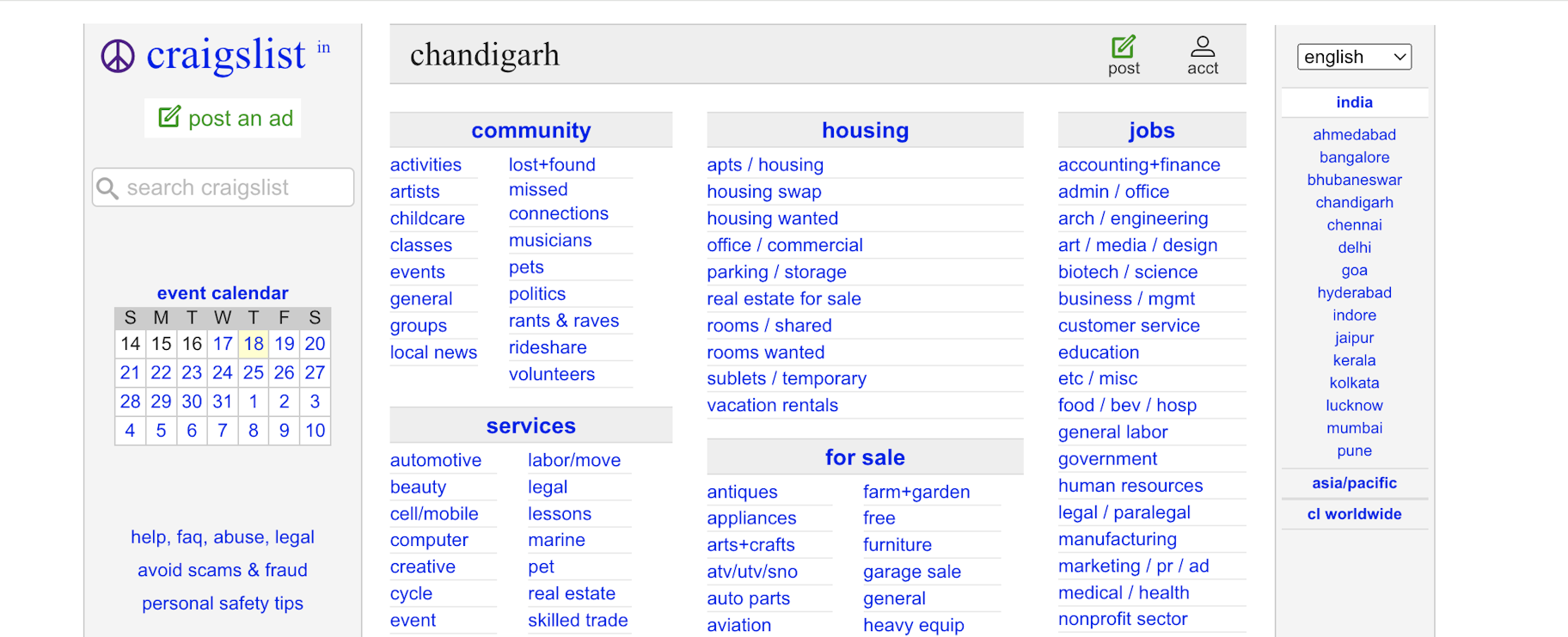
Craigslist is a basic forum that’s easy to use. Started in 1995 by Craig Newmark, it was originally developed to provide information on local happenings around the San Francisco Bay Area. Today, it is the go-to online selling site for many individuals and even some businesses.
The downside of Craigslist is the rampant scams and the “you’re on your own” style of dealing with fraud and disputes, which makes it a higher-risk selling site.
This online selling site is best suited for those who prefer to sell locally and make deals in person. Some people take advantage of buying low and selling high on Craigslist, which can turn a pretty profit for those into market arbitrage.
11. Facebook Marketplace
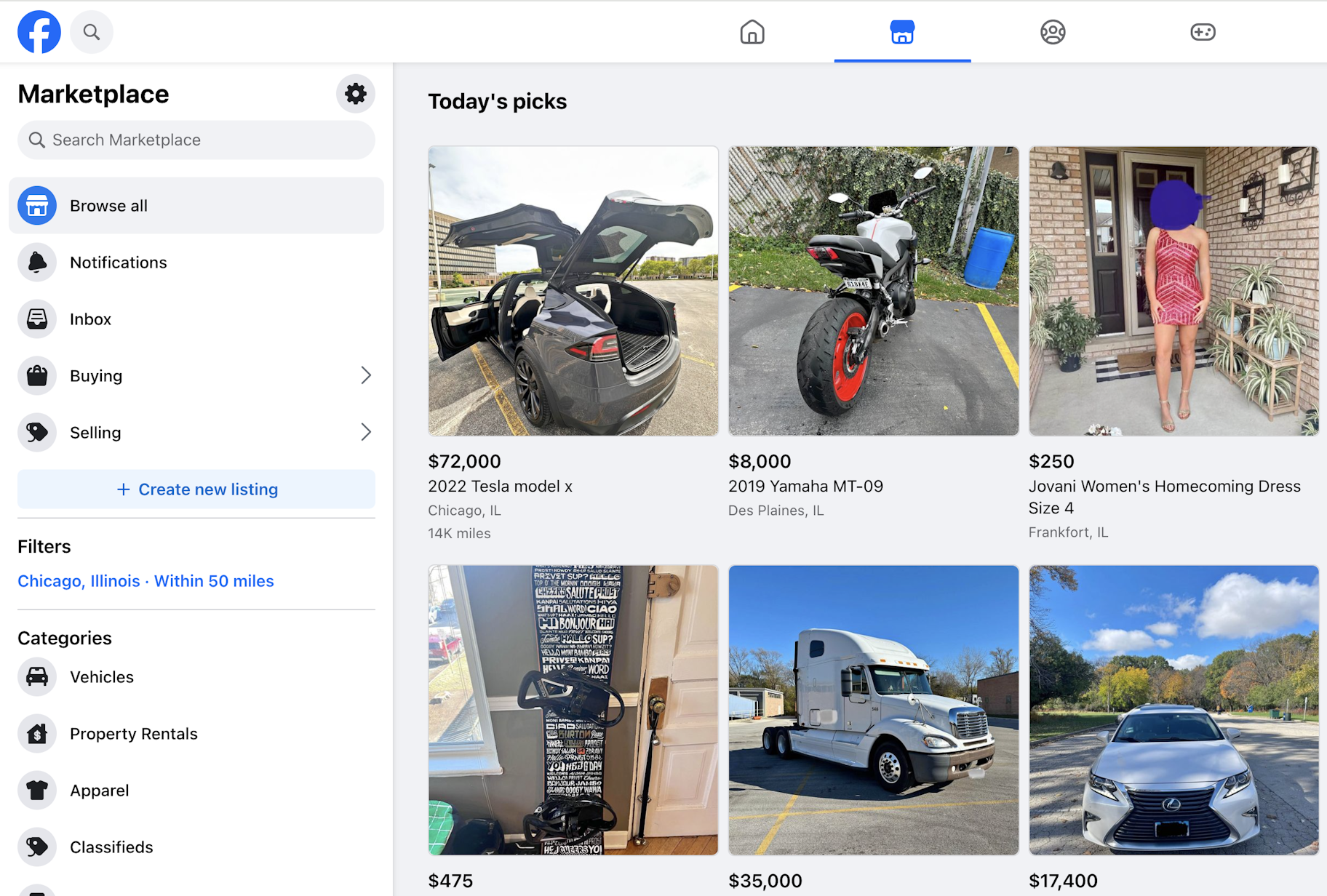
Facebook created Facebook Marketplace to bring people in communities together to buy and sell. What’s exciting about Facebook Marketplace is that the company is starting to support ecommerce merchants.
Facebook has teamed up with platforms like Shopify to help businesses sell their products on Facebook Marketplace. This partnership makes it more convenient for Shopify merchants to list and manage their products on the Marketplace platform.
There are no listing fees, but there are specific requirements and guidelines you must follow as a merchant on Marketplace.
12. VarageSale
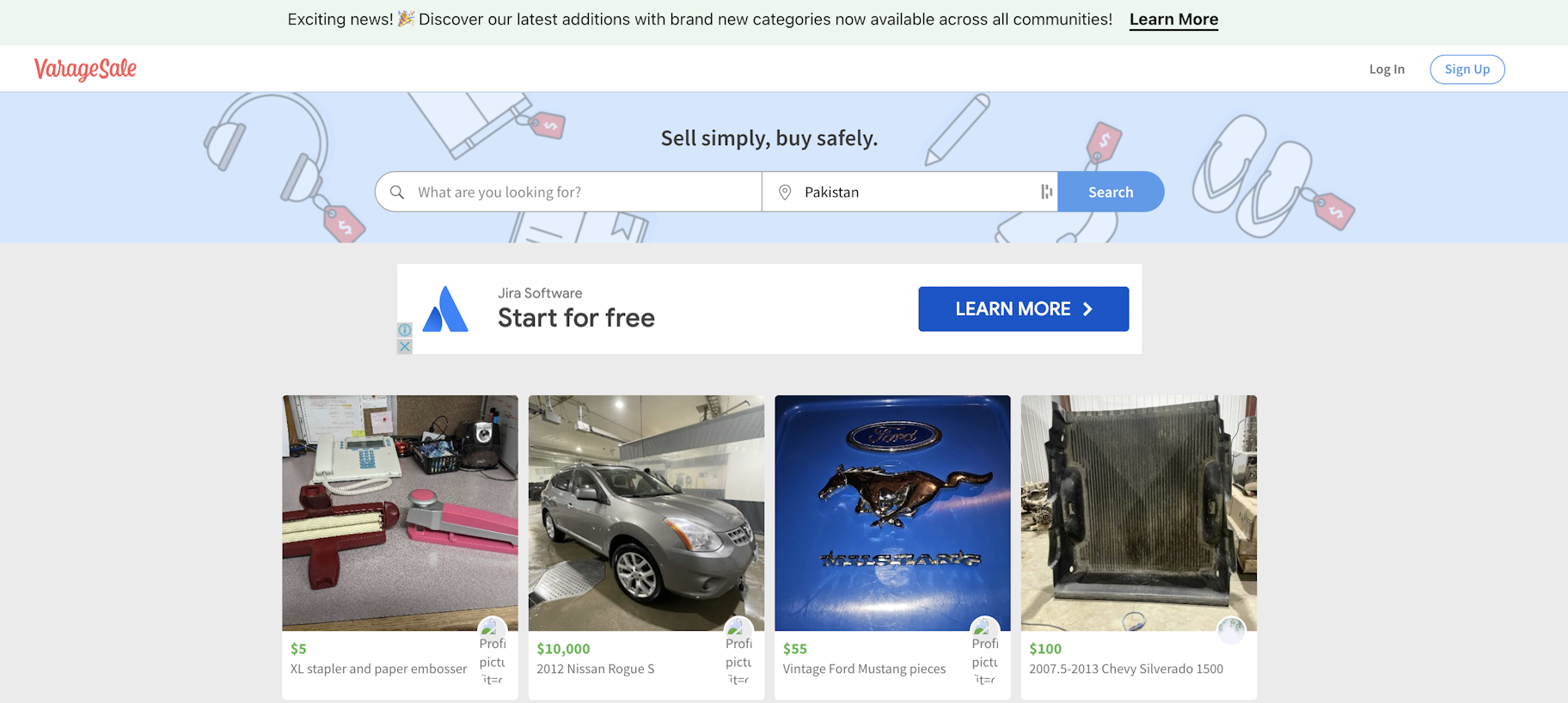
VarageSale is a Toronto-based online selling platform created by a former elementary school teacher who grew frustrated with the scams and illegitimate listings on classified sites.
The site requires sellers to create a Facebook verified profile to ensure that merchants use a real profile image and name, along with a personal bio. This helps buyers feel comfortable doing transactions, as they have a better idea of who they are dealing with.
VarageSale members can sell products online for free. As a seller, you can create a listing with a headline, description, and product photo. If someone is interested in making a purchase, they can reserve your item and plan an offline meetup for exchange, or use Stripe to make an online payment.
As of this writing, the platform isn’t charging a seller or transaction fee from merchants.
13. OfferUp
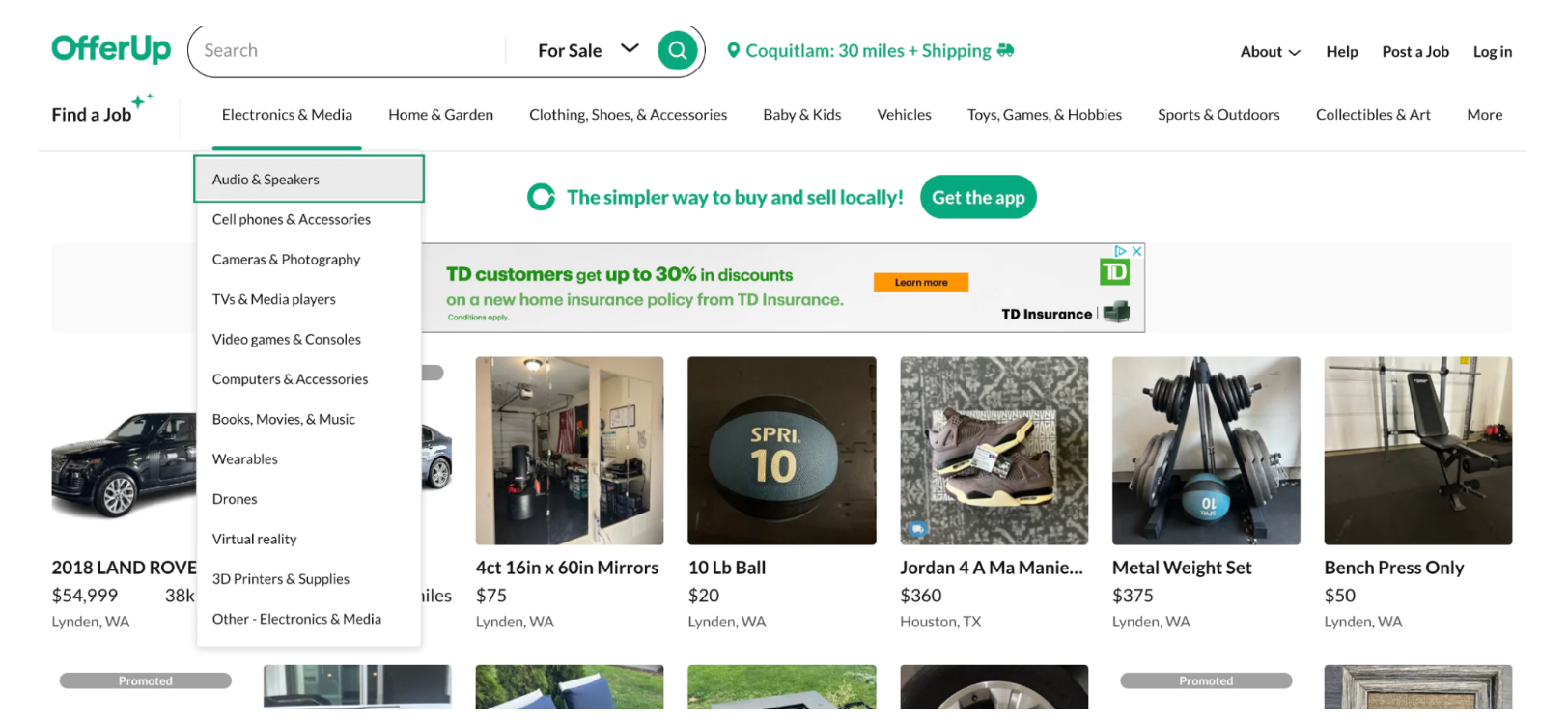
OfferUp (formerly LetGo) is an app that enables merchants to sell a wide range of items, from electronics and clothing to automobiles. You enter a ZIP code and the app displays your listings to potential buyers in the local area.
If a buyer likes one of your items, they can message you directly through OfferUp. You can then discuss the price and set up a meeting place to complete the sale.
OfferUp prioritizes the safety of its users. As a seller, you can check out the profiles and reviews of buyers before meeting them. Plus, OfferUp employs TruYou, a system for verifying the identities of its users, to foster a safer retail environment.
14. Nextdoor

Similar to Craigslist, Nextdoor is about community. It’s a platform where neighbors can share information about what’s going on in their area—from announcing a block party to complaining about the traffic on their streets.
Beyond being a neighborhood forum, Nextdoor also provides a free forum for selling your items online. Like Craigslist and Facebook Marketplace, there are no listing or membership fees, but you do have to meet your buyer and make the exchange in person.
This platform feels a little safer than Craigslist, as it requires that you sign up and create an account. Because of that, it tends to be more private and have fewer scams.
International online selling sites
For reaching an international audience, here are the best sites to focus on:
- AliExpress
- Rakuten
- Flipkart
- MyDeal
- OTTO
- Mercado Libre
15. AliExpress
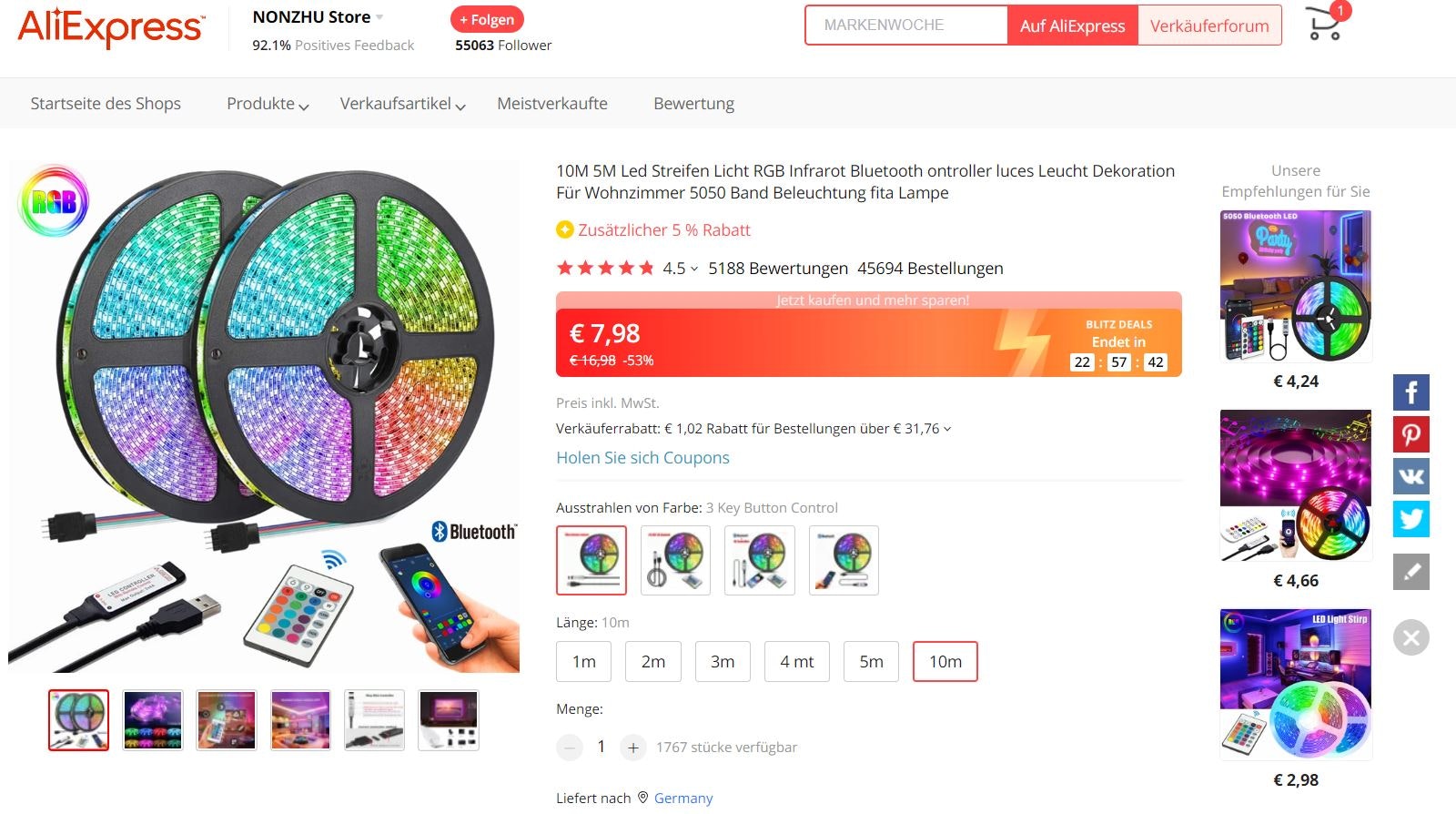
AliExpress is one of the largest online marketplaces globally, drawing in almost 20 million visitors every day. It’s a versatile platform where both individuals and businesses can sell.
AliExpress has a variety of product categories, making it ideal for a wide range of sellers. Whether you’re into fashion, electronics, or home goods, there’s a space for your products.
AliExpress also offers an affiliate program. With this, you can earn an 8.5% commission on every sale. The chances of making money are pretty high, because the site uses cookies that last up to 30 days to track visitors.
As for fees, AliExpress takes a commission of between 5% and 8% on each transaction. This depends on the type of product you’re selling. Other than that, there are no extra costs like overhead or setup fees for selling or dropshipping on AliExpress.
Pro tip: If you’re already selling on Shopify, you can integrate your existing inventory with AliExpress using software connectors. This makes it easier to manage your sales across both platforms.
16. Rakuten
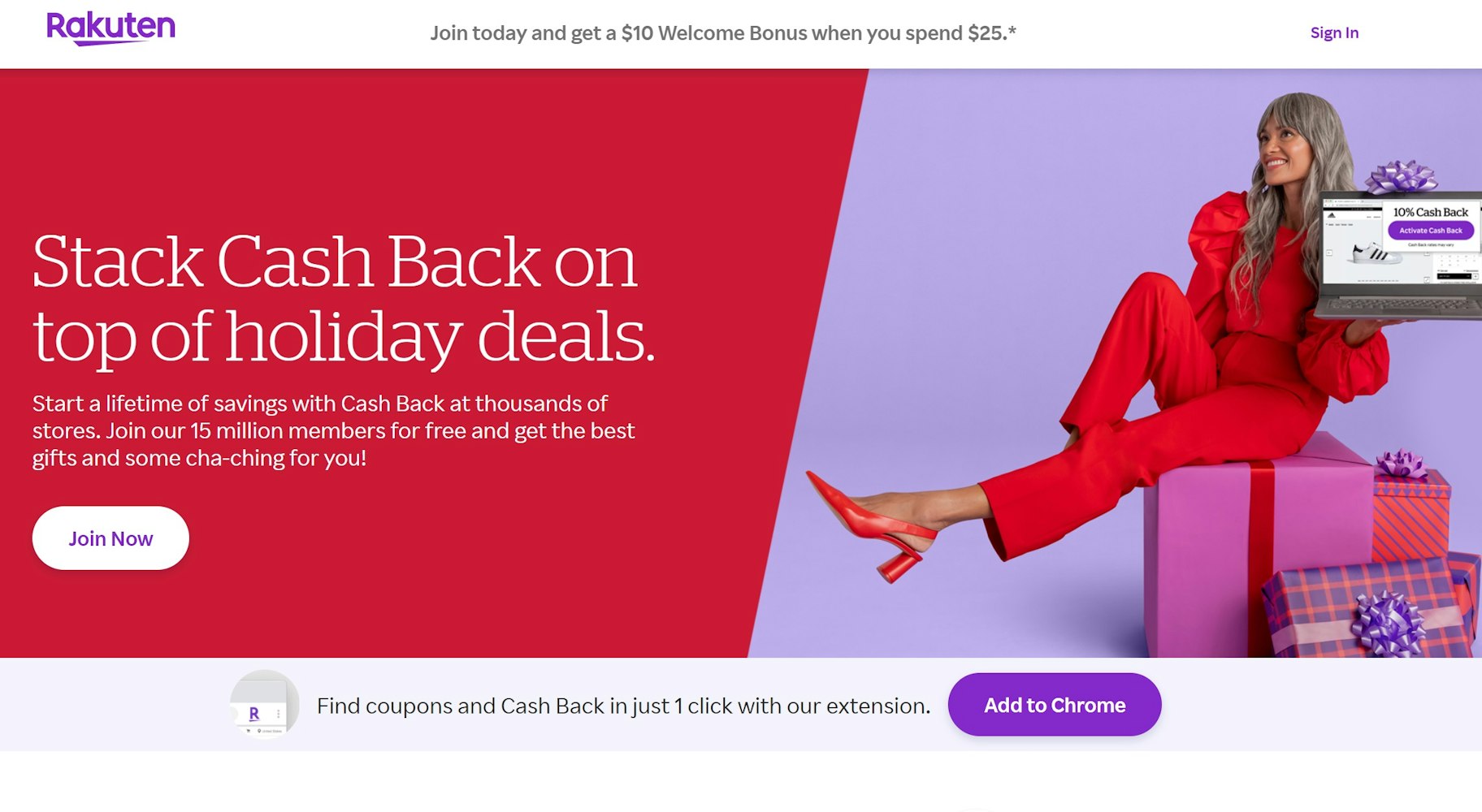
Rakuten is a large marketplace based in Japan, focusing on cross-border ecommerce. It’s a platform where you can sell almost anything, from clothing and books to sports gear and subscription boxes.
To sell on Rakuten, your business should be registered in the US or Japan, or you could work with a service partner. Rakuten connects new sellers with onboarding consultants who assist in the application, registration, and setup processes.
Keep in mind that when selling on Rakuten, you’re in charge of the shipping process. This responsibility includes managing the processing of orders and clearly listing the times when shipping starts.
17. Flipkart
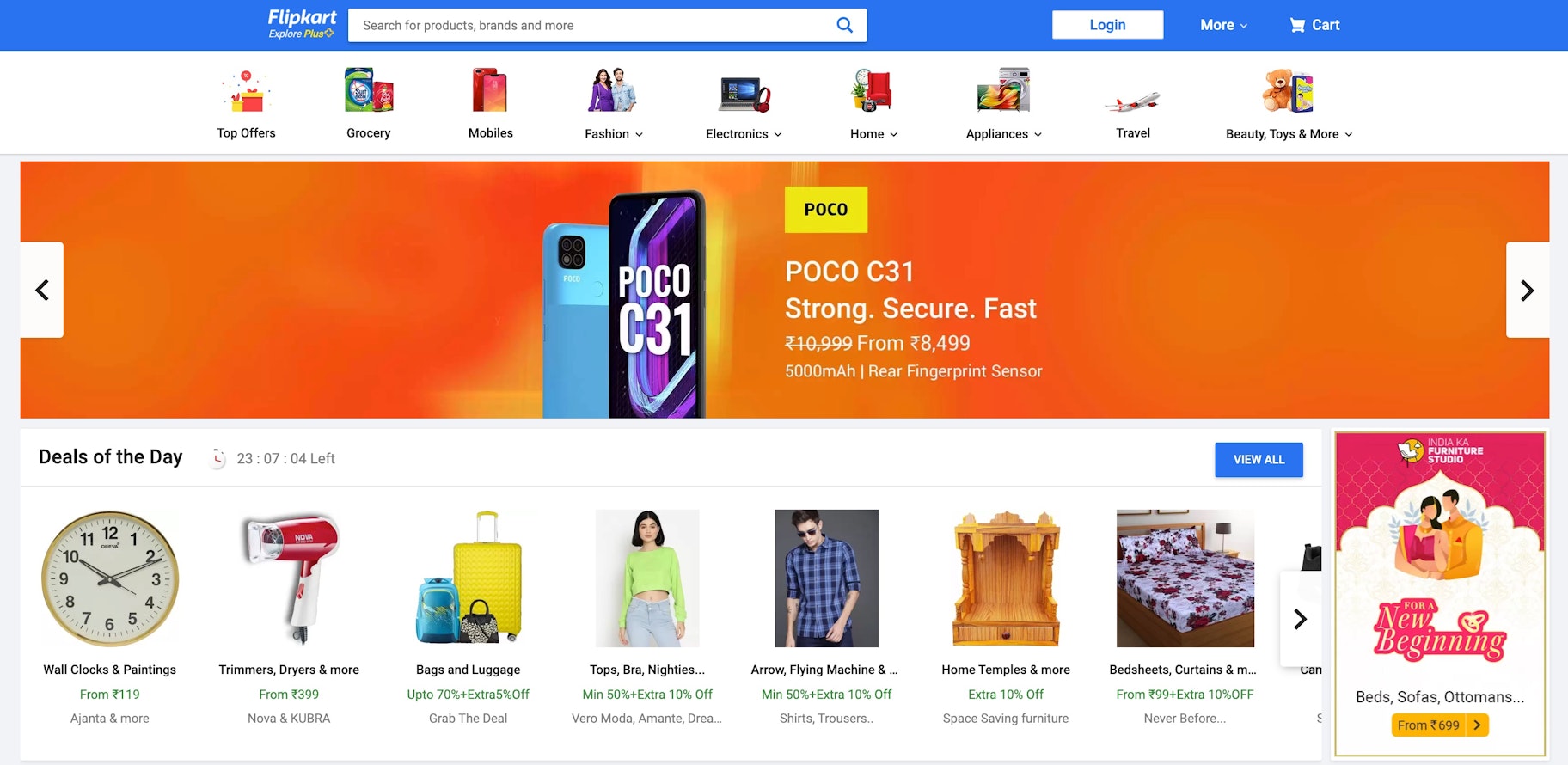
For merchants looking to grow their online business in Southeast Asia, Flipkart is a top choice. It’s Amazon’s main competitor in India and appeals to a wide range of customers in the region.
Flipkart provides extensive support to sellers. This includes services like professional account management, assistance with cataloging, and help with product photoshoots. It also offers a dedicated fulfillment service, making the logistics of selling smoother and more efficient.
Additionally, Flipkart makes buying easier for customers. With options like Flipkart Pay Later (Flipkart’s version of buy now, pay later) and cardless credit, even customers who are short on cash can make purchases. This flexibility in payments can really boost your sales.
18. MyDeal
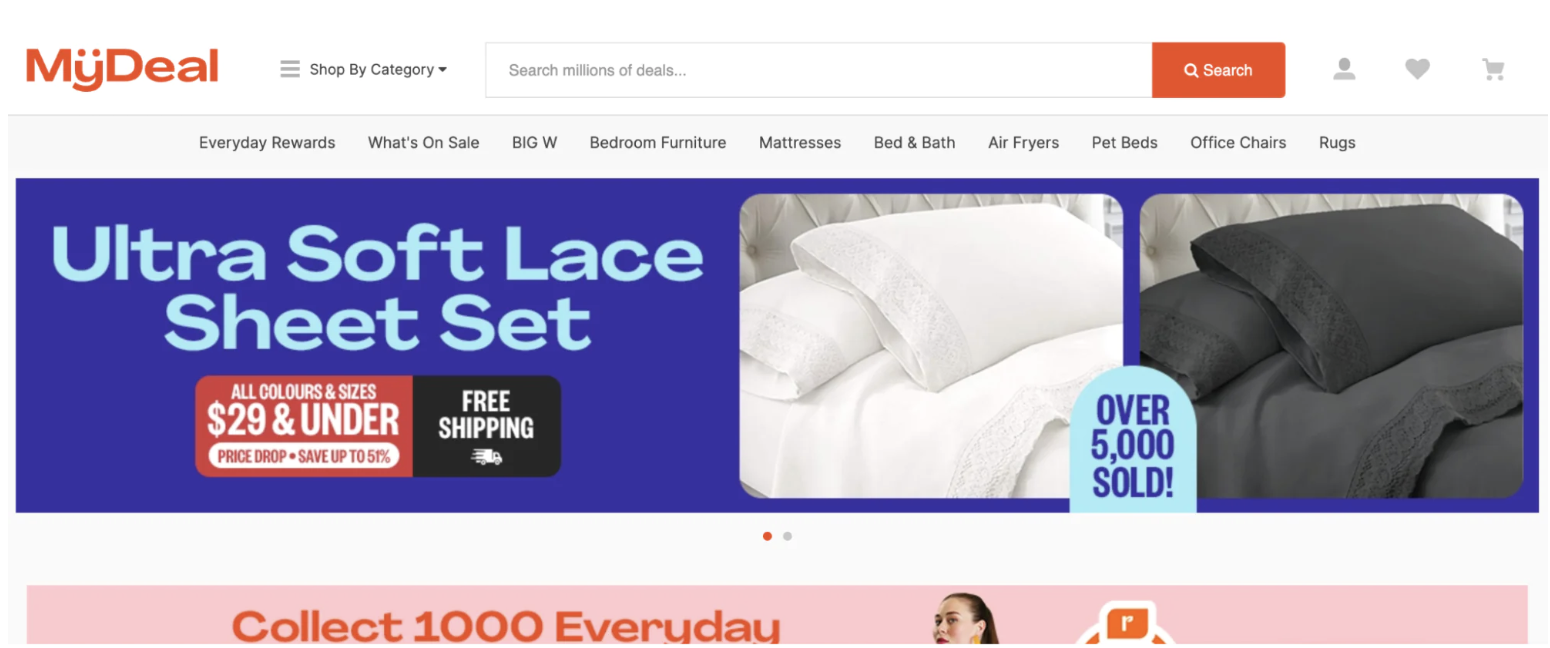
MyDeal is an Australian online marketplace with more than one million products spread across 3,500 different categories. It allows third-party sellers to reach a wide audience, with the platform drawing in over four million visitors each month.
MyDeal is versatile in terms of what you can sell, but there’s a noticeable lean toward certain categories. Items like furniture and homewares, along with other larger products, are particularly prominent on MyDeal. So, it’s a good spot if you’re looking to sell these kinds of items.
One thing to note about MyDeal is that it doesn’t provide any fulfillment services. This means, as a seller, you’ll need to handle your own shipping. You can either manage this yourself or partner with an external logistics company to get your products to buyers.
19. OTTO
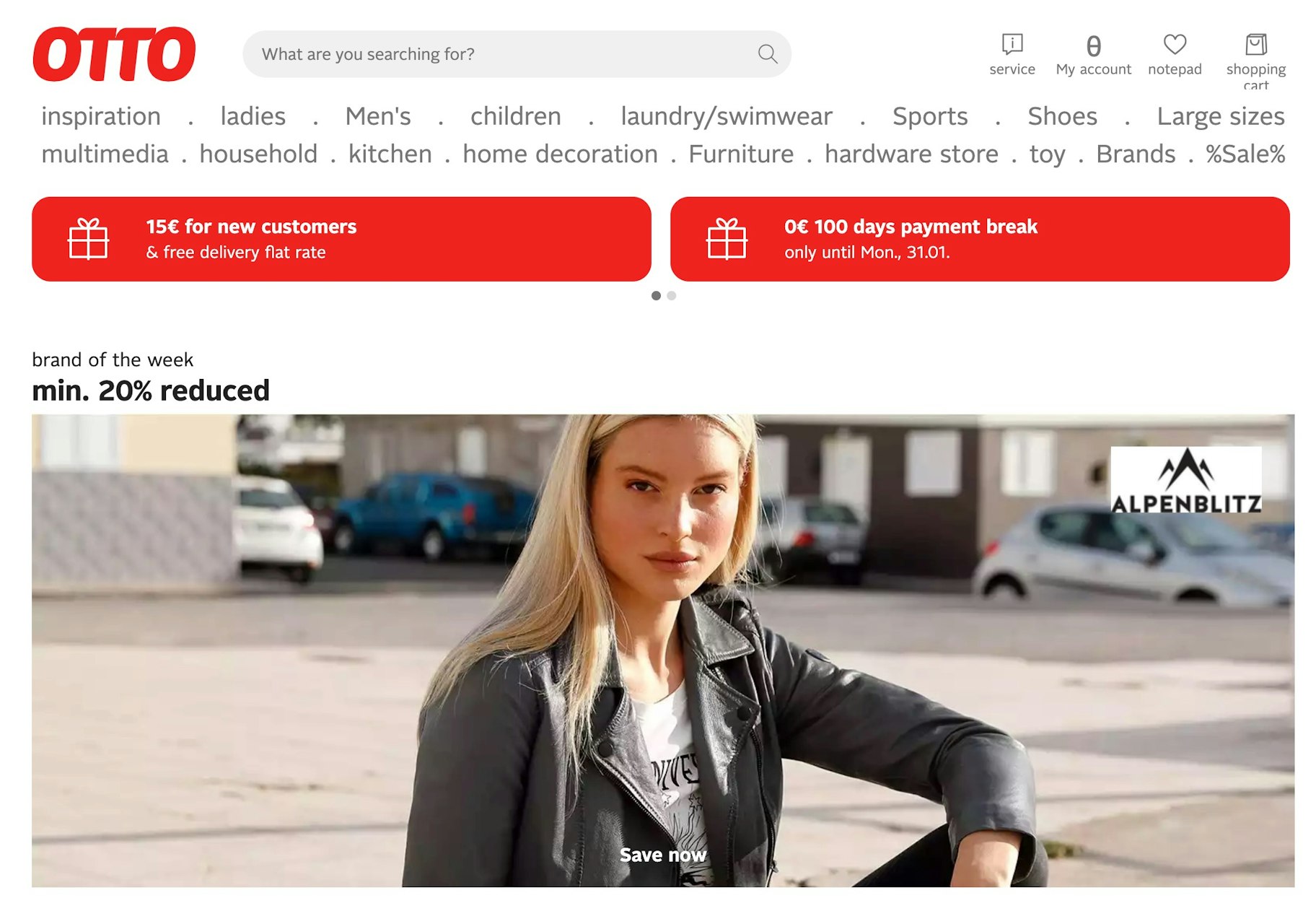
Otto is a German marketplace specializing in fashion and lifestyle products, from branded items to third-party retailer goods. This diversity attracts a wide range of shoppers.
One key advantage of selling on OTTO is its lower rate of product returns. This is a big plus for sellers seeking stable and predictable sales. Additionally, the platform offers cost-effective options for pay-per-click advertising campaigns.
Sellers also benefit from OTTO’s fast, competent, and personalized support. This level of assistance is invaluable, especially for those who depend on the platform’s team to help resolve business issues efficiently.
20. Mercado Libre
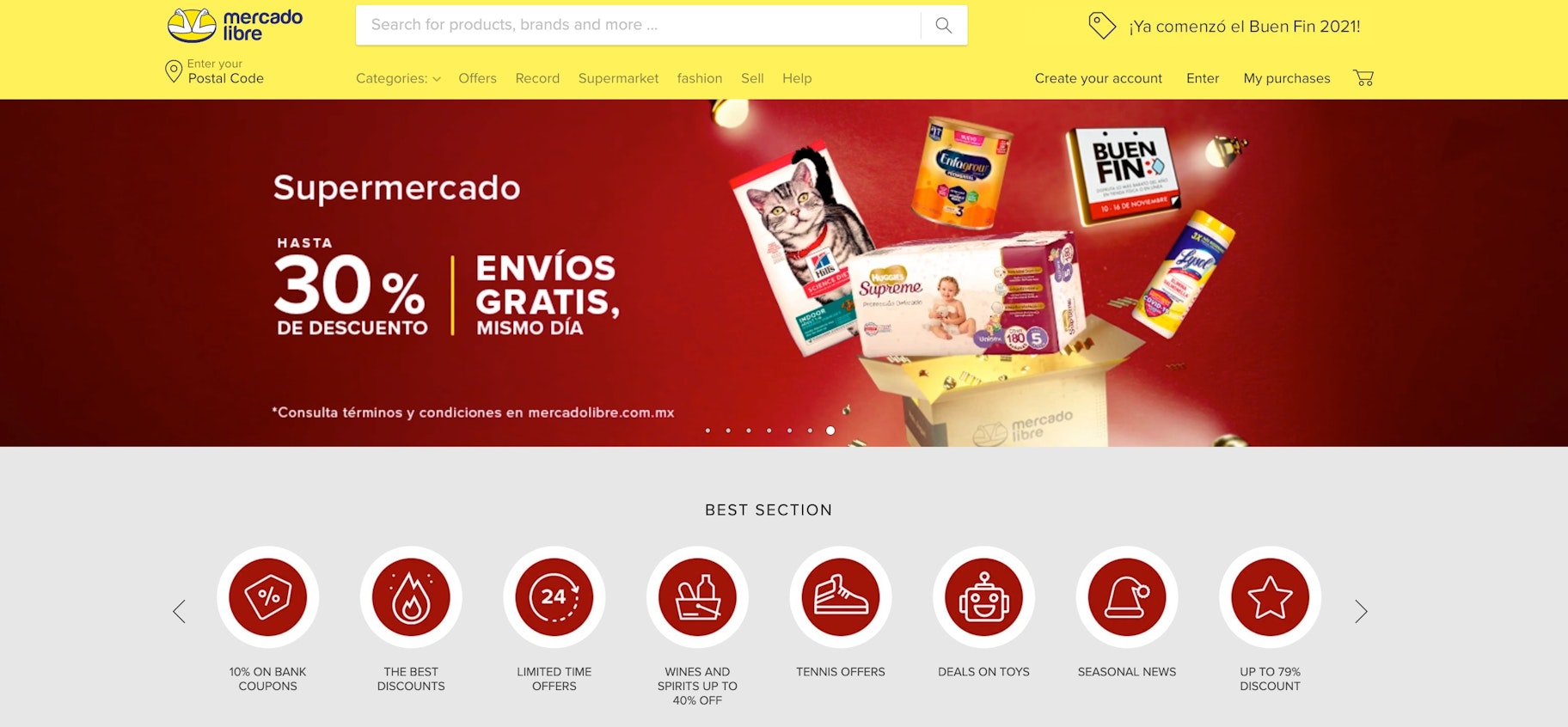
Mercado Libre is the leading ecommerce marketplace in Latin America, covering more than 18 countries, from Argentina to Mexico. It’s a vibrant platform where sellers offer a wide range of products across 20 main categories and 123 subcategories.
Selling in Latin America is made easy with Mercado Libre’s Global Selling. This feature allows you to manage your business across four different Latin American marketplaces from a single account.
You can list your products for free and communicate with buyers using an automated translation tool. Plus, you receive payments in USD, avoiding the hassle of currency fluctuations.
Something for everybody
No matter what you’re selling or how you want to sell it, there’s an online selling site that fits your needs. Whether you want to clear your cluttered home, expand your reach for your retail store, or break into the ecommerce scene with your unique brand, you’re sure to find a platform on this list that works for you.
Got a site you love to use that isn’t listed here? Let us know in the comments!
Online selling FAQ
How can I start selling online?
- Create your own online store with an ecommerce platform.
- Sign up as a seller on popular sites like Amazon, Rakuten, or Etsy.
- Sell directly through social media platforms like TikTok and Instagram.
- Start your own dropshipping business.
- Sell old things by registering on apps VarageSale and Decluttr.
What are the best sites for selling your products online?
There are many sites to sell your products online. You could consider Shopify, Bonanza, eBay, Etsy, Facebook Marketplace, or Craigslist, to name a few.
What are the best known online clothes selling sites?
Ruby Lane, Facebook Marketplace, Nextdoor, and Etsy are known online clothes selling sites. Each varies in fees and costs, but their brands are strong and reliable.
What are the top online selling sites for individual sellers?
Chairish, VarageSale, and Bonanza are examples of top online selling sites for individual sellers. Each has a strong community of entrepreneurs and a loyal customer base that keeps coming back for more.






